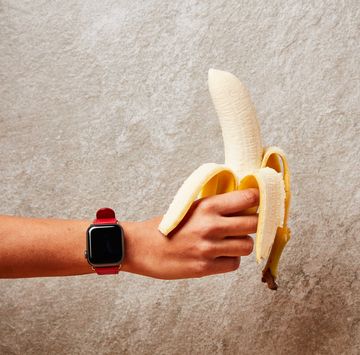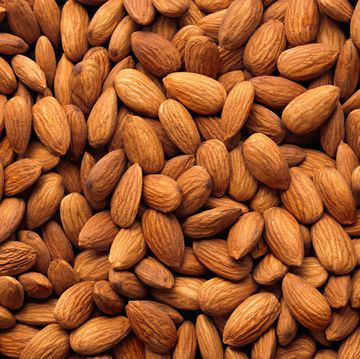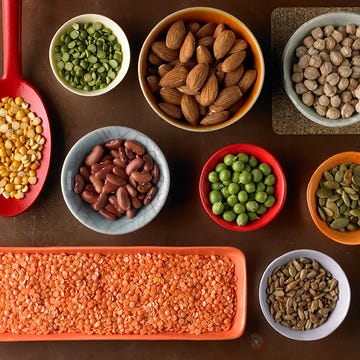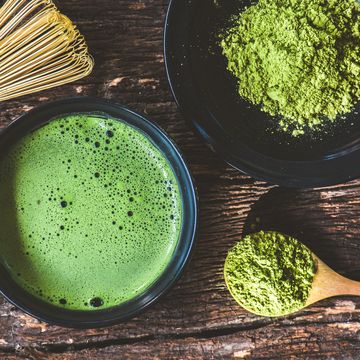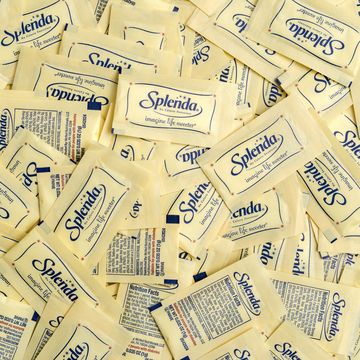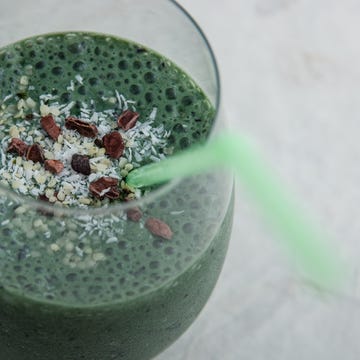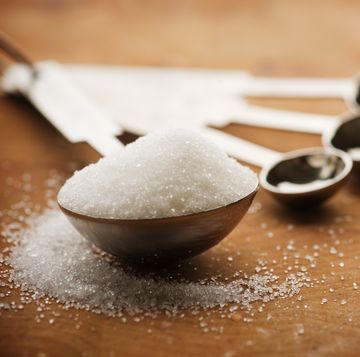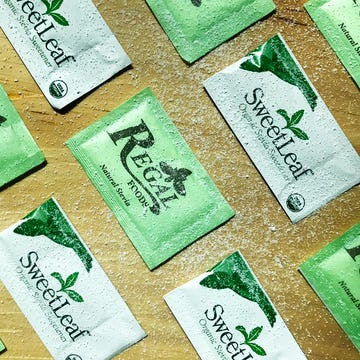Bananas
 Getty Images
Getty Images“Bananas are great because they’re easy to digest and considered non-irritating for the stomach and upper gastrointestinal tract,” says Julie Upton, M.S., R.D., cofounder of Appetite for Health. The high-fiber fruit not only keeps the system regular and aids in recovering from diarrhea, but the vitamin B6 also reduces bloating caused by fluid retention and the magnesium helps to relax muscles.
White Toast
 littleny//Getty Images
littleny//Getty ImagesWhile it may seem counterintuitive, keeping your belly empty when feeling queasy can create more nausea because there’s nothing in the system to absorb stomach acid. Upton suggests nibbling on white toast or soda crackers every few hours since the starches from these simple carbohydrates “lack fiber, protein, and fat—all of which slow digestion and sit in your stomach longer.” The result: stool with some extra bulk.
Upton’s top two choices belong to the BRAT (bananas, rice, applesauce, and dry toast) diet, “the clinical diet plan registered dietitians use when patients have acute diarrhea or nausea.”
Advertisement - Continue Reading Below
Eggs
 Getty Images
Getty Images“High-fat sources of protein like processed or red meats and fried food can cause reflux—especially if you’re consuming large amounts late at night,” London says. “Eggs are an easier-to-digest alternative and an easy way to meet your protein needs without getting too full, too fast.” She recommends scrambling them with a drizzle of cooking oil or butter for a light dinner when you need something simple.
Oats
 Synergee//Getty Images
Synergee//Getty ImagesAdding whole grains can both soothe tummy ailments and prevent any future intestinal issues. “Soluble fiber from oats draws water into your digestive tract and moves food through your body,” London says. Aim to gradually hit at least 25 to 35 grams of total fiber per day, but don’t overdo it. “Both hunger and overeating can make nausea, bloating, abdominal pain, and gas even worse,” she adds.
Advertisement - Continue Reading Below
Tomatoes
 Getty Images
Getty ImagesPrebiotic foods—produce, whole grains, pulses, nuts, and seeds—can help “fuel” friendly gut bacteria in your GI tract, London explains. By stimulating that “microbiota,” prebiotics boost intestinal immunity and prevent inflammation, diarrhea, and other GI problems, according to 2013 research by the Institute of Food Technologists. Stock up on tomatoes, chicory, onions, asparagus, and wheat for the best benefits.
Sweet Potatoes
 Getty Images
Getty ImagesFoods that are rich in calcium, magnesium, and potassium also reduce belly bloat by balancing out sodium. Plus, research has linked diets high in these nutrients with smaller waists in those genetically predisposed to carrying weight in their midsections. Add yams plus avocados, oranges, and spinach to your repertoire to help bust bloating.
Advertisement - Continue Reading Below
Ginger
 Getty Images
Getty Images“Ginger tea, ginger supplements, ginger lozenges—ginger has been shown in some studies to help alleviate nausea and vomiting,” Upton says. “In fact, it is often recommended for morning sickness and for chemotherapy-induced nausea.”
Just one word of caution: “While it’s safe for adults, ginger should not be used to treat a child’s gastrointestinal illness,” she adds.

Amy Capetta has been writing health and lifestyle articles for over 15 years. Her work has appeared in Weight Watchers, Woman’s Day and Prevention, as well as on AOL, Redbookmag.com, TODAY.com and Yahoo Health. When she’s not on deadline or speaking with a nutritionist, doctor or wellness guru, she’s more than likely tweeting, power walking or creating a fruit and veggie smoothie.
Advertisement - Continue Reading Below
Readers Also Read
Advertisement - Continue Reading Below
Advertisement - Continue Reading Below




